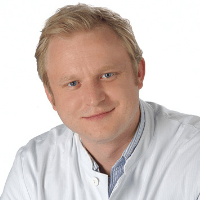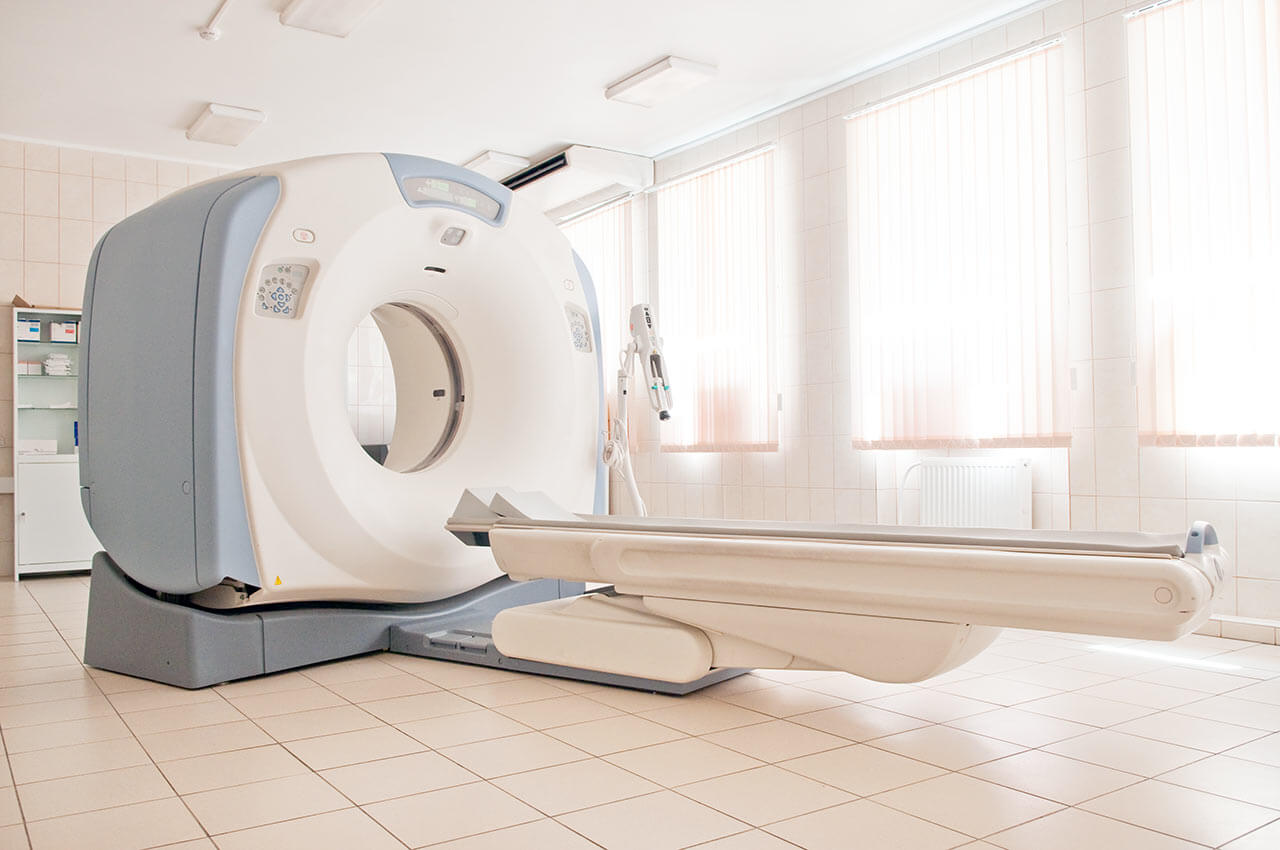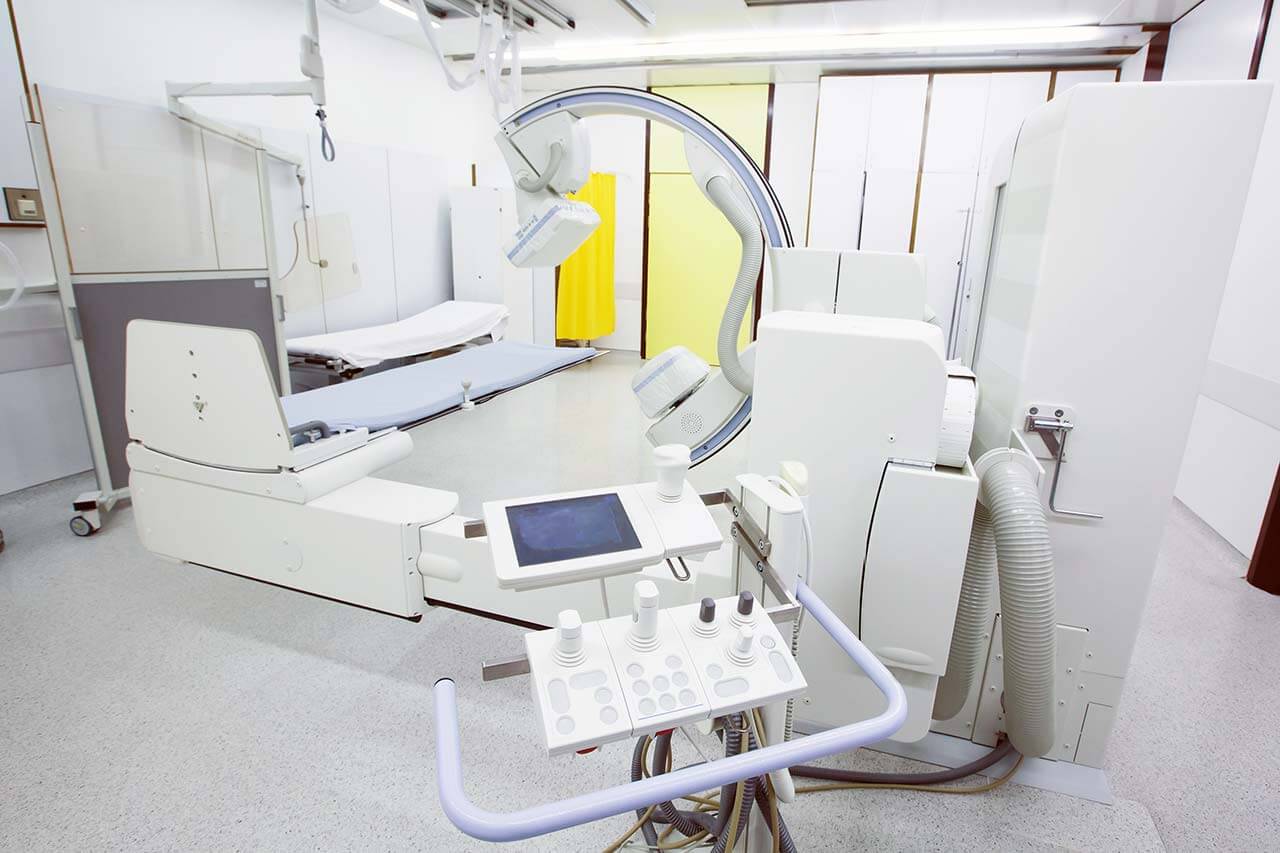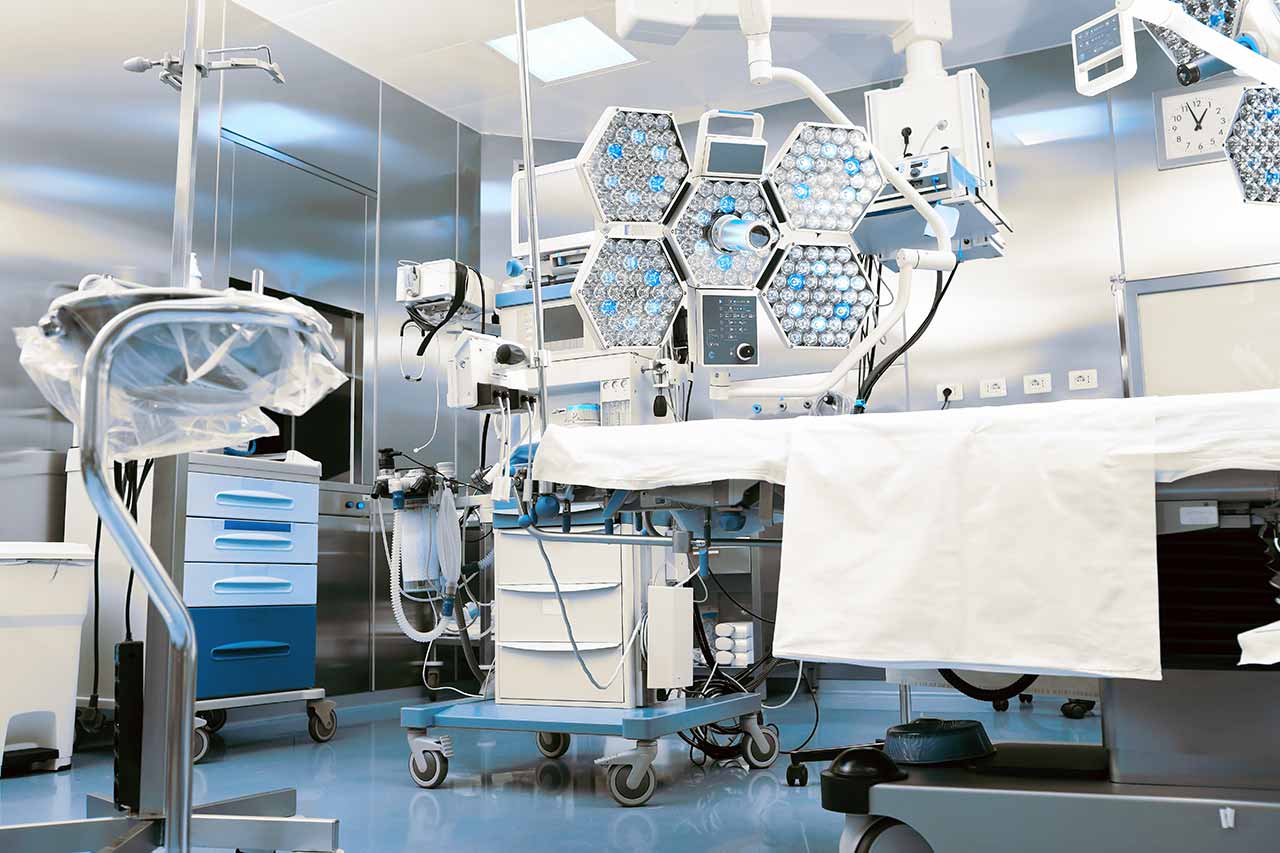
The program includes:
- Initial presentation in the hospital
- Clinical history taking
- Review of available medical records
- Physical examination
- Laboratory tests:
- Complete blood count
- General urine analysis
- Biochemical analysis of blood
- Tumor markers
- Inflammation indicators (CRP, ESR)
- Coagulogram
- Ultrasound scan
- CT scan / MRI
- Preoperative care
- Embolization or chemoembolization, 2 procedures
- Symptomatic treatment
- Cost of essential medicines
- Nursing services
- Elaboration of further recommendations
How program is carried out
During the first visit, the doctor will conduct a clinical examination and go through the results of the available diagnostic tests. After that, you will undergo the necessary additional examination, such as the assessment of liver and kidney function, ultrasound scan, CT scan and MRI. This will allow the doctor to determine which vessels are feeding the tumor and its metastases, as well as determine how well you will tolerate the procedure.
Chemoembolization begins with local anesthesia and catheterization of the femoral artery. The thin catheter is inserted through a few centimeters long incision of the blood vessel. The doctor gradually moves the catheter to the vessel feeding the primary tumor or its metastases. The procedure is carried out under visual control, an angiographic device is used for this. The vascular bed and the position of the catheter in it are displayed on the screen of the angiograph.
When the catheter reaches a suspected artery, a contrast agent is injected through it. Due to the introduction of the contrast agent, the doctor clearly sees the smallest vessels of the tumor and the surrounding healthy tissues on the screen of the angiograph. After that, he injects emboli into the tumor vessels through the same catheter.
Emboli are the spirals or the liquid microspheres. The type of embolus is selected individually, taking into account the diameter of the target vessel. When carrying out chemoembolization, a solution of a chemotherapy drug is additionally injected into the tumor vessel. Due to the subsequent closure of the vessel lumen with an embolus, the chemotherapy drug influences the tumor for a long time. In addition, the drug does not enter the systemic circulation, which allows doctors to use high doses of chemotherapeutic agents without the development of serious side effects. Chemoembolization leads to the destruction of the tumor or slowing down its progression.
After that, the catheter is removed from the artery. The doctor puts a vascular suture on the femoral artery and closes it with a sterile dressing. During chemoembolization, you will be awake. General anesthesia is not used, which significantly reduces the risks of the procedure and allows performing it on an outpatient basis, avoiding long hospital stay.
After the first procedure, you will stay under the supervision of an interventional oncologist and general practitioner. If necessary, you will receive symptomatic treatment. As a rule, a second chemoembolization procedure is performed in 3-5 days after the first one in order to consolidate the therapeutic effect. After that, you will receive recommendations for further follow-up and treatment.
Required documents
- Medical records
- MRI/CT scan (not older than 3 months)
- Biopsy results (if available)
Service
You may also book:
 BookingHealth Price from:
BookingHealth Price from:
About the department
The Department of Adult and Pediatric Diagnostic, Interventional Radiology at the University Hospital Freiburg offers the full range of services in these fields. The department is headed by Prof. Dr. med. Fabian Bamberg.
The specialization covers the diagnostics and treatment of benign and malignant diseases with the help of modern imaging methods (CT, MRI, ultrasound and traditional X-ray examinations). In addition, the department's scope of tasks includes the diagnostics and treatment of vascular occlusions and stenosis, radiological examinations in children. The department is certified in accordance with the criteria of KTQ (Cooperation for Transparency and Quality in Health Care).
The service range of the department includes:
- Diagnostic radiology
- Angiography (vascular imaging examination)
- Computed tomography (CT)
- Digital volumetric tomography (3D X-ray examinations of bones in the arms and legs)
- Digital X-ray examinations
- Classic X-ray examinations
- Diagnostics of breast cancer (clinical examinations, full-field digital mammography, high-resolution tomosynthesis, breast MRI, sonography-, mammography- and MRI-guided vacuum biopsy)
- Magnetic resonance imaging, including special MRI examinations (for example, bowel hydro-MRI)
- Pediatric radiology (diagnostics in infants, young children and adolescents)
- X-ray and fluoroscopy
- Computed tomography (CT)
- Magnetic resonance imaging (MRI)
- Ultrasound examinations
- Interventional radiology
- Interventional diagnostics
- Imaging-guided biopsy
- Catheter angiography
- Interventional therapy for the treatment of benign and malignant tumors
- Vacuum needle biopsy
- Radiofrequency and microwave ablation
- Transarterial chemoembolization
- Selective internal radiation therapy
- Portal vein embolization
- Uterine artery embolization for the treatment of uterine myomas
- Installation of port systems for infusion therapy
- Haemorrhage embolization
- Interventional procedures for drainage implantation
- CT-guided drainage implantation in abscesses
- Percutaneous transhepatic bile duct drainage
- Sacral nerves stimulation
- Interventional diagnostics
- Angiographic interventions
- Percutaneous transluminal balloon angioplasty
- Stenting in vascular stenosis and occlusion
- Implantation of stent grafts (especially in patients with ruptures or aneurysms of blood vessels)
- Thrombolysis and thrombectomy
- Atherectomy
- Transjugular intrahepatic portosystemic shunting (TIPS)
- Other diagnostic and therapeutic options
Curriculum vitae
- 06/2006 - 06/2008 Harvard University, School of Public Health, Boston, MA.
- 2007 Doctor of Medicine (dissertation defense, summa cum laude), University of Witten-Herdecke.
- 03/2000 - 06/2006 Education at the University of Witten-Herdecke, Witten, Germany.
- 10/1999 - 03/2000 Study of Medicine at the Hannover Medical School, Germany.
Academic Career
- Since 04/2009 Department of Clinical Radiology, University of Munich, Germany.
- 03/2008 - 12/2009 Co-Director, MGH Cardiovascular CT Core Lab, Clinical Trials, Harvard Medical School.
- 11/2007 - 12/2009 Instructor in Radiology, Massachusetts General Hospital, Harvard Medical School.
- 06/2006 - 11/2007 Research Fellow, Department of Radiology, Massachusetts General Hospital, Harvard Medical School.
Research Focuses
- Assessment of novel imaging technologies in a clinical and epidemiological context with a special emphasis on diagnostic accuracy, impact on clinical decision making, and cost-effectiveness analysis.
- Feasibility of cardiac computed tomography for the detection of coronary stenosis and assessment of atherosclerotic plaque in ex-vivo, in-vivo animal, and patient cohort studies.
Awards and Prizes
- 2003 - 2004 Research Scholarship, Peter and Ruth Wirths Foundation, Zürich.
- 2003 - 2004 Research Scholarship, Daniela und Jürgen Westphal Foundation, Flensburg, Germany.
- 2008 - 2009 Fellowship, Massachusetts General Hospital, Boston, MA.
- 12/2009 Trainee Research Prize, Radiological Society of North America.
- 11/2010 Trainee Research Prize, Radiological Society of North America.
- 04/2009 Co-Chair, Imaging Working Group, German National Cohort, Whole-body Magnetic Resonance Imaging.
- 03/2011 Panel Reviewer, European Research Council, "Diagnostic tools, therapies and public health".
Photo of the doctor: (с) Universitätsklinikum Freiburg
About hospital
The University Hospital Freiburg is famous for its rich history and is one of the oldest and most prestigious medical facilities in Germany (one of the three best medical institutions in the country). The hospital was based on the Faculty of Medicine of the Albert Ludwig University of Freiburg, which celebrated its 550th anniversary in 2007. It should be noted that the hospital is proud of its world-renowned specialists, many of whom during their work here have become Nobel laureates.
The medical facility represents all fields of modern medicine. It consists of 42 departments, 11 institutes and 10 interdisciplinary centers. The highly qualified doctors of the hospital deal with the treatment and rehabilitation of patients with both common and rare diseases. All departments and institutes of the hospital take an active part in fundamental researches of international scale, due to which patients have access to the very latest achievements of medicine, advanced diagnostic methods, state-of-the-art medical equipment and proven effective methods of therapy.
The hospital has a variety of medical achievements, for example, the world's first TIPS procedure, the first implantation of the Jarvik-2000 artificial heart in Europe, the first robotic-assisted surgery on the brain, and the first combined cardiopulmonary transplantation in the land of Baden-Württemberg. In 2004, the University Hospital Freiburg became the first German hospital, which performed kidney transplantation in the incompatibility of blood groups. At the moment, the hospital belongs to medical centers with the greatest experience in performing such an operation.
An interdisciplinary approach to treatment, highly qualified staff, as well as individual patient care and a pleasant environment are key to the hospital’s success.
Photo: (c) depositphotos
Accommodation in hospital
Patients rooms
The patients of the hospital are provided with comfortable rooms with a pleasant design, which create a conducive atmosphere for recovery. The standard furnishing of the patient room includes a telephone, a free radio and TV, a device for calling medical staff, lockers and a safe, an adjustable bed, a chair and a table. The pediatric departments are designed with play areas. The patient may be accommodated in a single or double enhanced-comfort room (for example, with an ensuite bathroom) at an additional cost.
Meals and Menus
The patients are offered good three meals a day with a large selection of dishes. The patients inform about their wishes to the menu in advance, and this information is transmitted to the kitchen. Throughout the day, patients may drink mineral water and tea, which can be found in the department on special tables. The bedridden patients receive drinks from the nursing staff. Other drinks may be purchased at the hospital’s cafeterias and bistro, where patients can come along with visitors.
If you do not eat some products due to intolerance or other personal reasons, please notify the nursing staff in advance, so that all your wishes to be taken into account when preparing the menu.
Further details
Standard rooms include:
Television
All patient rooms have a free radio and TV. The patients can also watch the hospital’s own 24-hour channel with a varied program and interesting information.
Accompanying person
At the availability of free beds, the accompanying person may be accommodated in the same room with the patient, at an additional cost. In addition, the hospital offers special accommodation conditions for patients requiring long-term hospitalization. Parents have at their disposal special apartments in the children's hospital.





